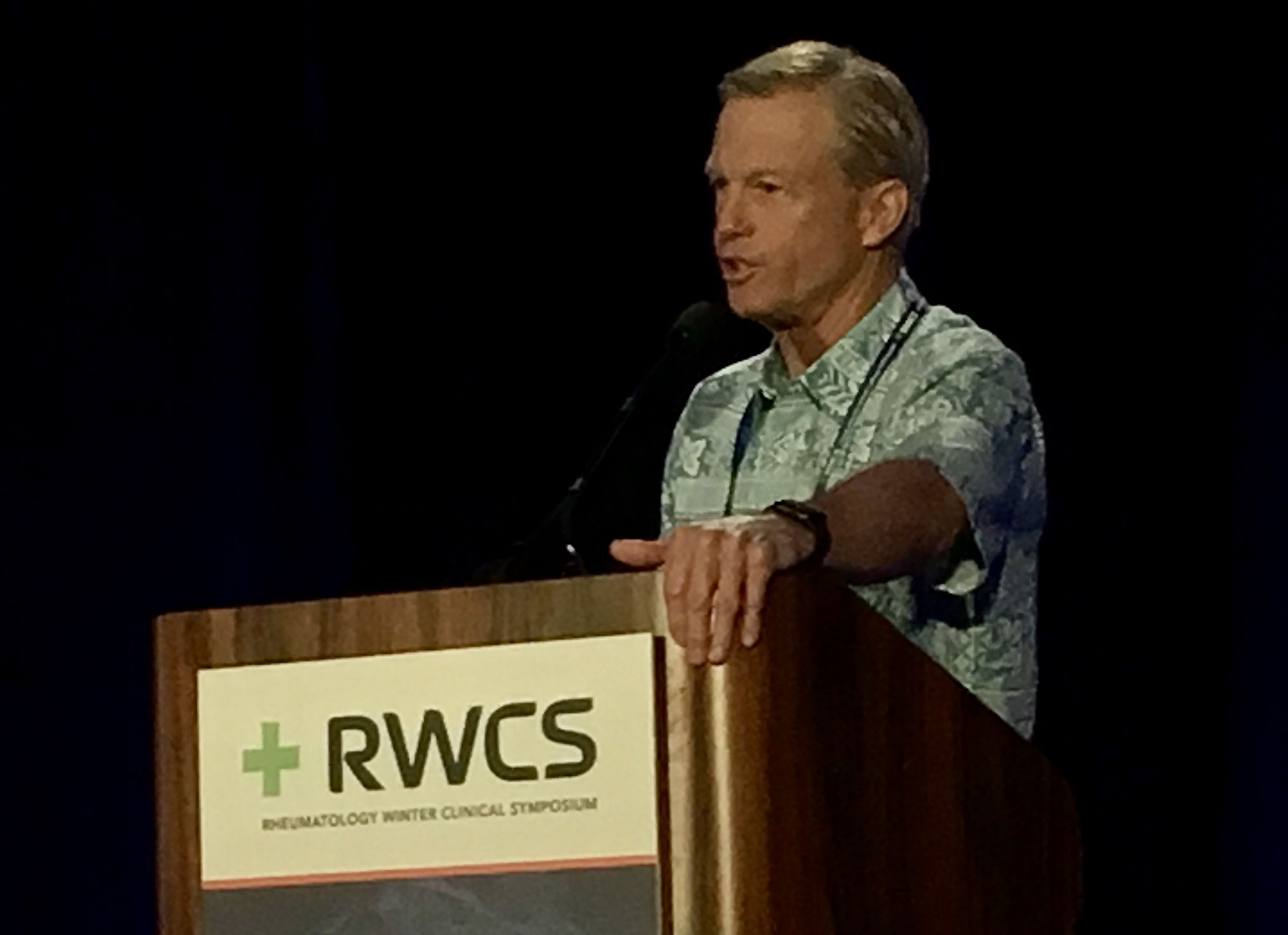Failure to ‘Move the Needle’ in OA Driving Joint Replacement Boom

MAUI, Hawaii — Although advances in rheumatology have nearly eliminated the need for joint replacement surgery among patients with inflammatory disease, failure to similarly “move the needle” for osteoarthritis has created “a perfect storm” of joint replacement demands, according to a presentation at the 2020 Rheumatology Winter Clinical Symposium.
“First of all, congratulations: Rheumatologists have eradicated rheumatoid arthritis from my practice,” William Bugbee, MD, chief of joint reconstruction in the department of orthopedics at the Scripps Clinic, told attendees. “The practice of rheumatology has changed so dramatically over the past 20 years. You now have solutions to problems you could never have fixed before. Today, most of the inflammatory patients that I see come to me with an underlying osteoarthritis in their knee or hip, not rheumatoid arthritis, which is pretty remarkable.”
He added, “However, that begs that other point that you are not doing so well in osteoarthritis management. You have not moved the needle. Post-traumatic arthritis is the new epidemic that we see in orthopedics — the young, active people becoming injured. My practice is filled with young arthritic patients and we are trying to find solutions for that.”
Between the young patients with post-traumatic arthritis and elderly patients electing to have their joints replaced sooner, Bugbee noted that “here is the perfect storm coming.” He said, “10 years ago, there were projections of how many hip and knee replacements would have been done in the U.S. It is thought that potentially by 2030, 1 million total hip [replacements] and 4 million total knee [replacements], which is roughly four times what we thought would happen.”

What can rheumatologists do to help? “Have a good relationship with a skilled and caring orthopedic surgeon, help with the modifiable patient risk factors, and clarify with your surgeon how to manage the DMARDs and biologics for the patients,” Bugbee said. “One of the biggest things right now, if you open any orthopedic journal, are the huge studies being done on modifiable risk factors. What has been proven over and over again is risk factors increase cost and increase mortality.”
In addition to other modifiable risk factors such as HbA1c, smoking, depression, opioids, discharge environment and DMARDs/biologics, obesity presents with enormous risk factors for adverse events. “Many of your institutions and colleagues will draw a line in the sand at a BMI of 40,” Bugbee said. “They will not operate on a patient with a BMI over 40. It isn’t an on/off switch, but rather it’s a continuum from 30-35-40-45 — at 40, however, infection rates triple and complication rates quadruple.”
Lastly, Bugbee asked that rheumatologists continue to offer education regarding inflammatory arthritis to their colleagues in orthopedic surgery.
“Unfortunately, we don’t see it, we don’t understand it, and rheumatology is moving ahead at seemingly light speed with all these new drugs,” he said. “It’s sad when I talk to my fellows and I bring in one of my older rheumatoid patients who has had 17 surgeries, and [the fellows] are amazed because they have never seen that in their residencies. Hopefully, you will keep trying to get a lecture in to the orthopedic residents because they have no idea what is happening [in inflammatory arthritis] with no understanding of the pathophysiology or what the treatments are.” – by Robert Stott
Reference:
Bugbee W. Joint Replacement in 2020. Presented at RWCS Annual Meeting; Feb. 12-15, 2020; Maui, Hawaii.
Disclosure: Bugbee reports consulting relationships with Arthrex, Insight Medical and Orthalign.








